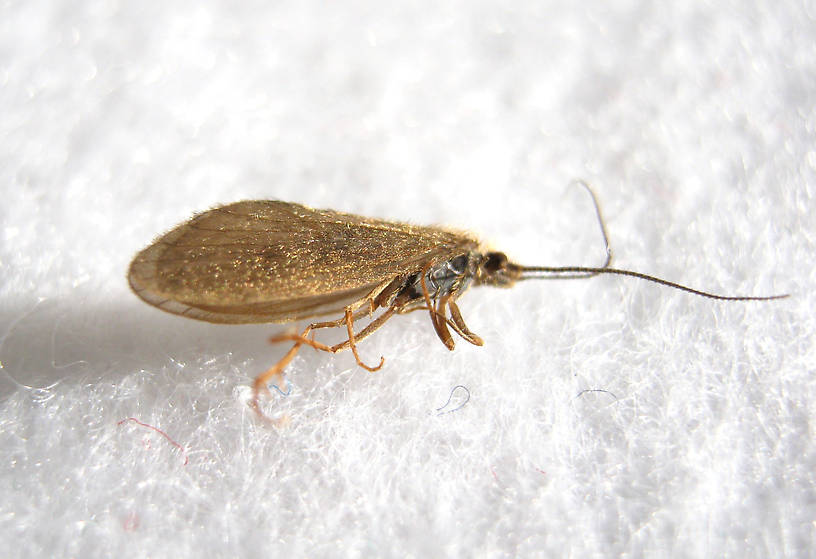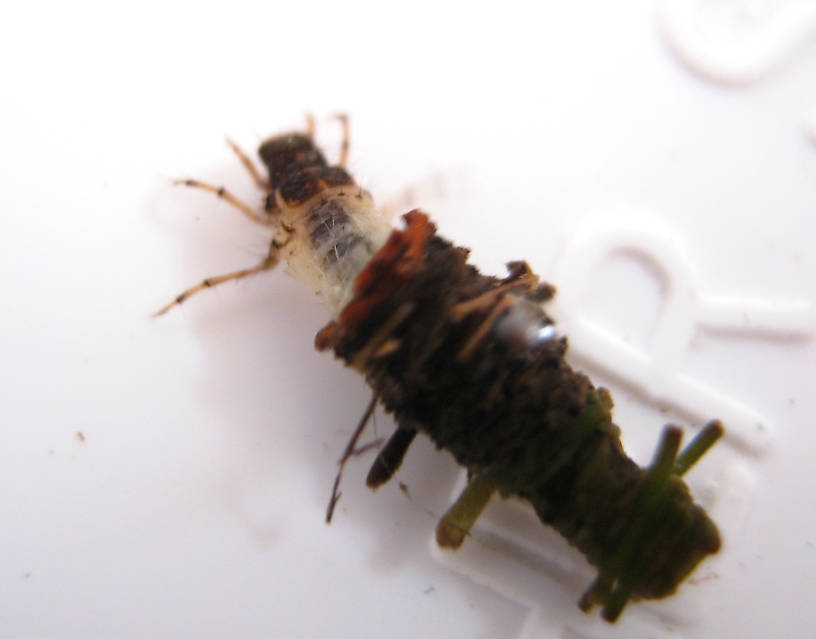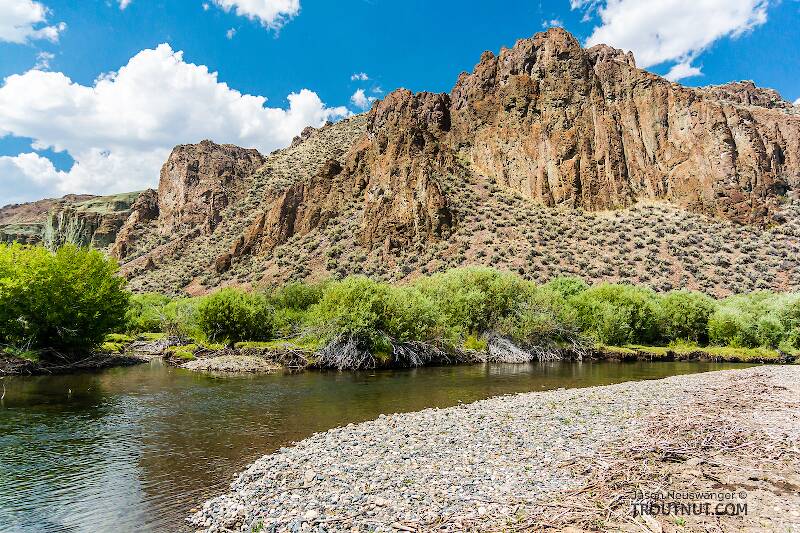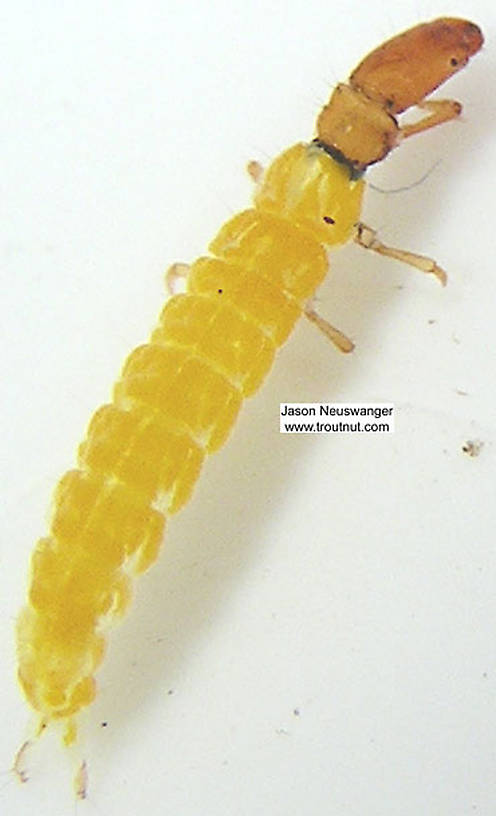
Salmonflies
Pteronarcys californica
The giant Salmonflies of the Western mountains are legendary for their proclivity to elicit consistent dry-fly action and ferocious strikes.
Featured on the forum

This specimen keys to the Epeorus albertae group of species. Of the five species in that group, the two known in Washington state are Epeorus albertae and Epeorus dulciana. Of the two, albertae has been collected in vastly more locations in Washington than dulciana, suggesting it is far more common. On that basis alone I'm tentatively putting this nymph in albertae, with the large caveat that there's no real information to rule out dulciana.

Troutnut is a project started in 2003 by salmonid ecologist Jason "Troutnut" Neuswanger to help anglers and
fly tyers unabashedly embrace the entomological side of the sport. Learn more about Troutnut or
support the project for an enhanced experience here.
Little Black Sedges
Like most common names,"Little Black Sedge" can refer to more than one taxon. They're previewed below, along with 3 specimens. For more detail click through to the scientific names.
Caddisfly Genus Chimarra
These are often called Little Black Sedges.
Chimarra aterrima is the most important species.
See 1 more specimen...
Caddisfly Genus Lepidostoma
These are very rarely called Little Black Sedges.
This genus is important for trout anglers. Many species of Lepidostoma produce excellent hatches, especially in the West. Lepidostoma can be very prolific in spring creek environments or smaller runoff streams with springs. Lepidostoma togatum is the most important species of this genus in the East and Midwest. The West has several species that are important.

These specimens are still alive, just very cold, so the colors are accurate. I put them in the freezer for a bit to settle them down and overdid it a little:)

The photo of the specimen cased is alive. The photo of the uncased larva is the same specimen taken after it was preserved in its case. Unfortunately, there was a lot of pigment transfer making the specimen look olivaceous. In life it was grayish white as shown in the first photo.
See 7 more specimens...


